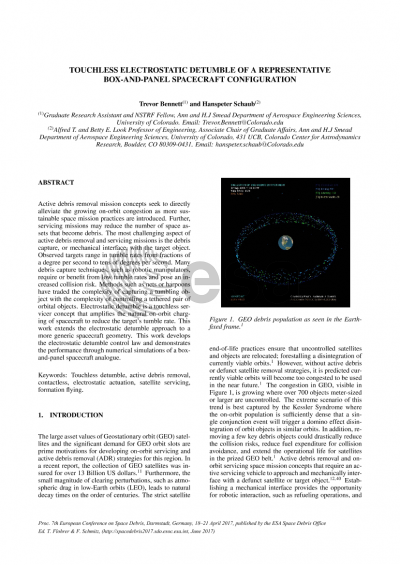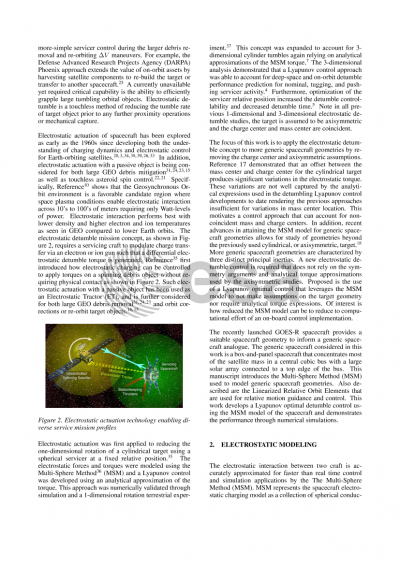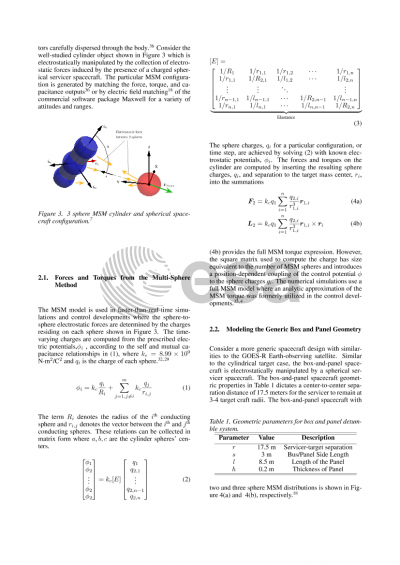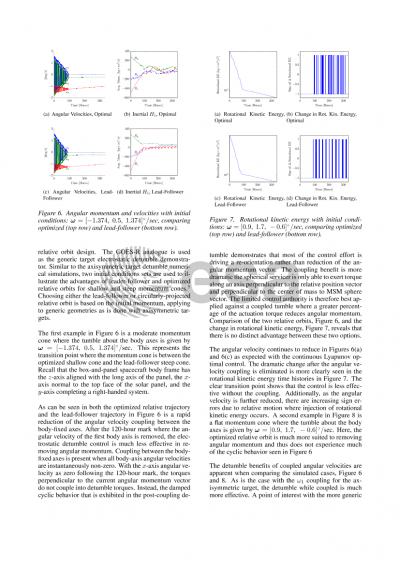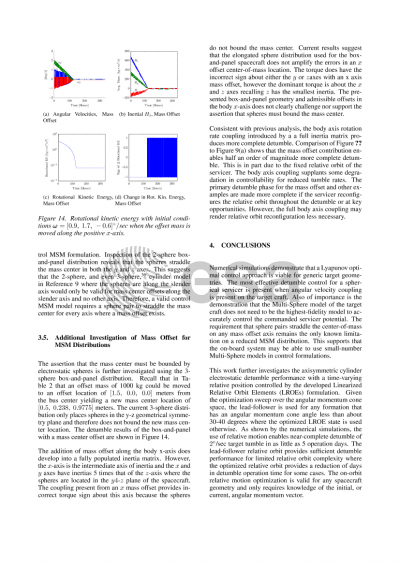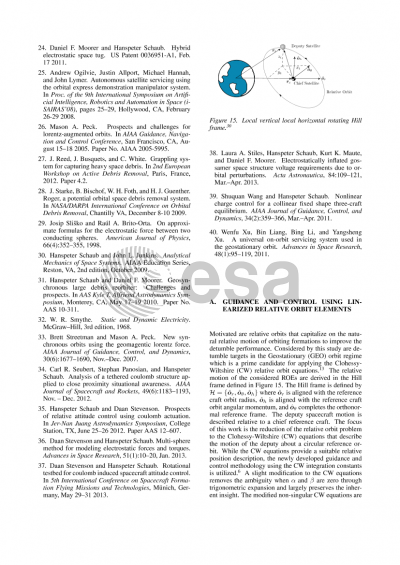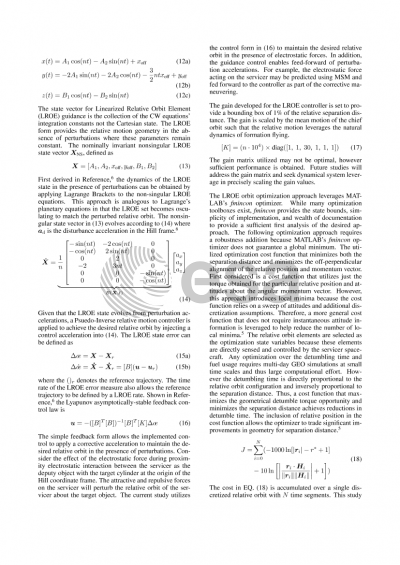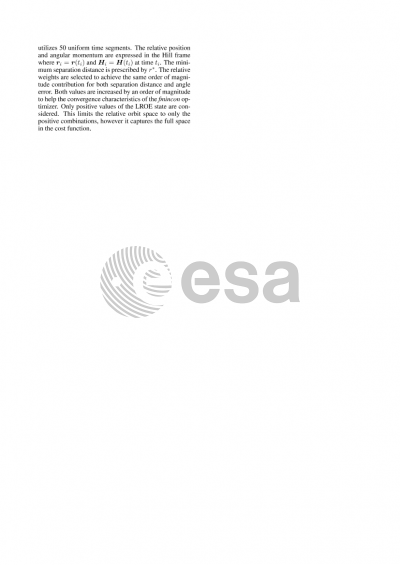Document details

Abstract
Orbital debris further complicates on-orbit operations of current space assets, guides existing and new space policy, and challenges new mission designs for end-of-life practices. Active debris removal mission concepts seek to directly alleviate the growing on-orbit congestion as more sustainable space mission practices are introduced. Further, servicing missions may reduce the number of space assets that become debris. The most challenging aspect of active debris removal and servicing missions is the debris capture, or mechanical interface, with the target object. Observed targets range in tumble rates from fractions of a degree per second to tens of degrees per second. Many debris capture techniques, such as robotic manipulators, require or benefit from low tumble rates and pose an increased collision risk. Methods such as nets or harpoons have traded the complexity of capturing a tumbling object with the complexity of controlling a tethered pair of orbital objects. Touchless methods leverage the natural environment to eliminate the complexity of mechanically-connected space assets. Electrostatic detumble is a touchless servicer concept that amplifies the natural on-orbit charging of spacecraft to reduce the target’s tumble rate. This work extends the electrostatic detumble development from axi-symmetric targets, such as booster upper-stages, to a more generic box-and-panel spacecraft geometry. The final manuscript will detail the electrostatic modeling of the box-and-panel target and develop the detumble dynamics for generic shapes like the box-and-panel. The manuscript will develop the electrostatic detumble control laws and demonstrate their performance through numerical simulations. The completed manuscript will demonstrate that a greater envelope of debris objects and satellites may be removed or serviced using electrostatic detumble technologies.
Preview
